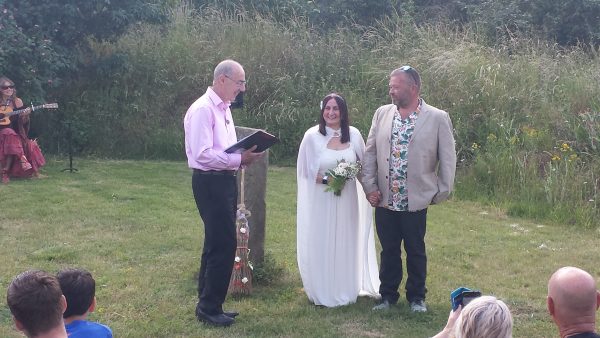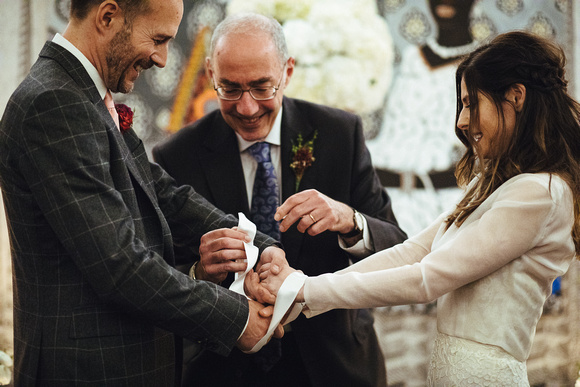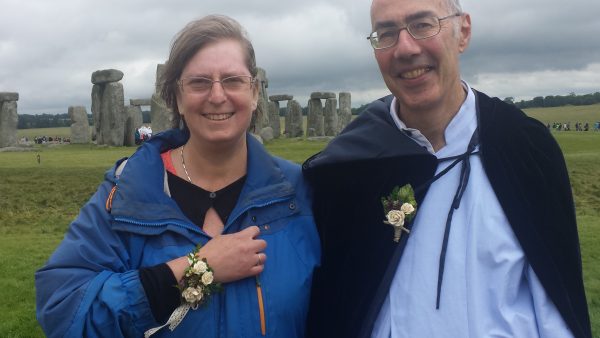
by Michael | Apr 29, 2019 | Blog
Unless you’re a Pagan, it may have escaped you
that today is Beltane. It’s a fire ritual and has some interesting traditions.
What is it?
Beltane is a fire festival, and originates
from the Celtic God ‘Bel’, meaning ‘the bright one’ and the Gaelic word ‘teine’,
meaning fire.
Beltane honours life. Taking place on 30th
April, it represents the peak of Spring and the beginning of Summer. The theme
is fertility.
On the eve of the month of May, the sexuality
of life and the earth is at its peak.
The Maiden goddess has reached her fullness.
She is the manifestation of growth and renewal. She can be known as Flora, the
Goddess of Spring, the May Queen or the May Bride.
The Young Oak King or Jack-in-the-Green or the
Green Man falls in love with her and she accepts him.
The May Queen falls pregnant.
The couple are symbols of the Sacred Marriage,
the union of Earth and Sky. This is the night of the Greenwood Marriage.
Beltane traditions
As this is a fire festival, bonfires are lit to honour the sun and
encourage the support of Bel and the Sun’s light to prosper the coming harvest
and protect the community.
Traditionally, all fires in the community would have to be extinguished. Then a special fire, known as ‘tein-eigen’, or ‘need-fire’ is kindled for Beltane.
,People would jump the fire for cleansing, purification, and fertility. Some couples would jump together (to pledge continuing fidelity) and cattle and other animals would be driven through the smoke as a protection against disease and to bring fertility.
Finally, the villagers would take some of the Tein-eigen to start their own fires again.
Ceremonies
As Beltane celebrates the Great Wedding of the Goddess and the God, it
is a popular time for pagan weddings or handfastings.
If you would like to find out more about how you can mark Beltane, it’s possibly a little late now! However, if you’d like to consider a handfasting, then please get in touch!
For some ideas, please have a look at my YouTube channel (and subscribe!): https://www.youtube.com/channel/UC1wWfxIZw0VpZLbHrJAbV6A?view_as=subscriber

by Michael | Mar 5, 2019 | Blog
So what’s it all about?
I often get
asked what a handfasting is.
Do you remember when Prince William married Kate Middleton? Although the ceremony was religious, they briefly incorporated a ritual that resembled a handfasting. The Archbishop draped ribbons over the clasped hands of the couple.
So much else
was going on that it attracted little attention. In fact, a handfasting is
technically pagan, and can play a central role in pagan ceremonies.
However, it is often chosen as an “add-on” in a more traditional wedding.
A number of brides and grooms are intrigued by this and have decided to incorporate this in their wedding.
Of course, it can be included in a Vow Renewal too.
History
Handfastings
began as a marriage rite in the Middle Ages. When peasants married, they might
have been unable to afford a clergyman’s fee to hear their vows or a ring to
signify their love. The ritual of handfasting became a popular alternative.
A cord was wrapped round the wrists of the couple and left on until their union was consummated. It would usually be kept as a tangible reminder and proof of their commitment and love.
It has given
us the expression “tying the knot”.
Present-day Ceremony
Nowadays, the cord symbolises the pair’s mutual love. The way a handfasting can be slipped in to a service is as follows. Please note that this is only a suggestion, and it will be rather different for a pagan ceremony.
- Walking down the aisle to be given away by a parent
- Celebrant welcome
- Meaning of love (possibly from a religious slant, if that’s wanted)
- Here, or after the Handfasting, or at both times, a song or a reading/poem
- Handfasting
- Possibly, a Unity Candle or Sand Ceremony or Chalice ritual
- Exchange of Rings/Vows
- Jumping the Broom (not actually pagan, but deriving from wedding ceremonies conducted by slaves in the American South), now used to symbolise sweeping in the new as a new home is created
- Concluding words
Thoughts
I conducted a memorable handfasting at an Iron Age Fort in Wiltshire. The ceremony was part-pagan, part-Jewish with rituals from both sides. (Of course, the symbolism was explained as we went along.)
It was a
totally unique occasion – absolutely perfect for the couple and – clearly – for
the guests too.
Another
example was when I shared a wonderful experience with an American couple at
Stonehenge at the time of the solstice – and that was quite unforgettable!
Otherwise, I
have performed handfastings indoors, and they were just as satisfying!
To add extra sparkle and personality to your big day, do find out about a handfasting. It will be a pleasure for me to tell you more.
Photo: www.lyndseygoddard.com
Please check out my improved YouTube channel and subscribe! https://www.youtube.com/channel/UC1wWfxIZw0VpZLbHrJAbV6A?view_as=subscriber

by Michael | Jan 21, 2019 | Blog
January is often a depressing time of the year (although potentially exciting). My posts are usually reasonably optimistic, as it is, but I particularly felt that a light-hearted piece was appropriate. What would fit best?
Finally, I opted for an account of a rather strange wedding I recently conducted.
There was already a mystery attached to this wedding before I even arrived. They had asked for a full religious wedding. That’s not an issue in itself, as I do offer religious (or part-religious) ceremonies quite often.
However, this couple were regular church attendees and I made it clear from the outset that I am not ordained. So why would they choose to work with me?
There may have been logistical reasons (maybe the priest wasn’t available). Or else personal reasons (perhaps they disliked the priest). Anyway, it came to the same. I was duly appointed and the build-up went quite smoothly. Everything seemed in hand on the eve of the wedding.
Kick-off was supposed to be 1.30 p.m. (a postponement from 12.45 only the week before). I allowed masses of time, as I had a long stretch of the M25 to cover,so, naturally, there were no traffic problems at all! I actually arrived around 11.45. Not unreasonably, the groom (let’s call him Martin) was not there yet.
Grooms tend to arrive between about 45 and 60 minutes before the ceremony start, so I occupied myself. It appeared that the bride was there (in a room,getting ready), so I knew I was in the right place.
The reception staff told me that the ceremony would be in the library, so I thought I’d familiarise myself with the layout. Not only did the library contain no books, but it didn’t even have bookshelves! Was this the right place?! It did, however, have about 40 decorated chairs (some 20 guests were expected), so I was somewhat reassured.
As the start time drew nearer, nobody appeared at the library. The reception knew nothing of Martin’s whereabouts, although a photographer had now materialised.
Twenty minutes before the ‘off’, it was like a ghost hotel. No groom, no guests, one photographer and an unseen bride. I decided to ring Martin.
“Oh, I’m in the car. I thought I’d buy some flowers for my fiancée. I’m on my way now.”
Bizarre as I found this, at least I had some sort of explanation, andI told him I’d await him in the library.
Nothing till 1.30 when Martin rang me. He had got lost, but had now arrived. Ten minutes later, still no sign of him. I rang him – he was being photographed!
At this point, a keyboard player and five guests turned up. Next, Martin actually showed up, very apologetic. He went off to get the bride, Winnie. So there was no procession, but, at 2.15, we were all together. Some of the guests were still missing, but Winnie insisted we began.
Five minutes in, no fewer than four photographers burst in, as did two more guests! As you can imagine, it was not the smoothest of ceremonies. To be fair, the couple took it seriously, and the rest of it actually went well. The other guests had opted to skip the ceremony, which I’d say was unusual.
It takes all sorts to make a world. I specialise in personalised ceremonies, so I am not one to criticise, but this was certainly a different approach.
Well, I hope it’s not too late to wish you all the very best for 2019. If you’re planning a ceremony this year, I trust it will be better organised than Martin’s was!
I’d certainly be glad to help you out.

by Michael | Jan 14, 2019 | Blog
Experience
and conversations at Wedding Fairs have taught me that a lot of people get
engaged over the Christmas/New Year break. For them, it’s a really happy time,
and they tend to walk around on cloud nine, grinning ecstatically. (No idea
what “cloud nine” actually refers to, but we all get the picture!)
Because most
newly-engaged couples are in a state of unreality, it’s hard for them to be
practical. However, assuming they’ve told parents etc. and are sure they’ve
made the right decision after the initial euphoria wears off, there’s work to
be done!
Decisions
Your main
tasks (to begin with!) are as follows:
- Settle
on a date for the wedding
- Agree
a budget (this may well involve parents etc.)
- Choose
a venue
- Decide
on the type of ceremony you’ll have
You may want to look at other things later, and such considerations will probably include booking registrars (if you won’t be marrying in a CE church), investigating a celebrant, arranging the entertainment, also the catering, flowers, photographers, and possibly, a wedding planner. (Apologies to suppliers I may have omitted!)
You’ll also
have things like guest lists. invitations and, eventually, seating plans to
look forward to!
The date
To secure
the venue of your choice, you must expect to book at least a year in advance.
Bear in mind that a wedding will normally be cheaper if it is out of season. Winter is good (excluding Christmas, New Year’s Eve and St Valentine’s Day). Weekdays tend to be cheapest. Mornings or afternoons are normally more reasonable.
If you
choose a Bank Holiday or holiday periods, people may be planning breaks, so get
your invitations out early.
The budget
Clearly,
this is down to you, but try and secure agreement for everything first and
foremost. Negotiations may be tricky, and you don’t want rifts. So be clear in
your mind what really matters to you, and insist (only) on this. (Preferably,
in a rational and pleasant way!)
Once things
have been agreed, don’t exceed limits!
The VenueAs soon as you have your budget, go along to venues that have been recommended or that you have researched. Take a pen and notebook with a list of questions, and find out exactly what the venue offers (and what is not included). But first and foremost, does the venue excite you? Do you really want to be married there?
The Ceremony
Obviously,
there are different types of ceremony.
Full
religious C of E ceremonies have their own rules and arrangements, and your
Church can give you further information.
Otherwise,
you will need to use registrars.
You have two
choices:
- Go with two witnesses (by
arrangement) to the Register Office in advance, and get legally married; then
you can go to the venue of your choice and have the ceremony of your choice!
Normally, this will be conducted by a civil celebrant (who helps you put
together a personalised ceremony).
- Pay several hundred pounds extra to
have the registrars come to your venue. Provided there are four solid walls,
they will perform a 10-15-minute ceremony, which means you are legally married.
This ceremony is totally non-religious and standard (ie one-size-fits-all). Following
the legal bit, your civil celebrant can then conduct the personalised ceremony
you have worked together to construct.
So have a chat with a civil celebrant and find out how it works. More importantly, together you can create a unique, tailor-made ceremony that will be memorable for you and your guests for a long time to come.
You could do
worse than contact Michael (07931 538487 – celebrant@vowsthatwow.co.uk) and
he will ensure you have a happy new(ish) year!

by Michael | Jan 7, 2019 | Blog
On your wedding day, you can’t avoid being the centre of attention. That’s as it should be, of course, but if you’re shy and retiring, it can make life very difficult indeed.
An introvert prefers remaining in the background, doesn’t relish small talk and likes the quiet. None of these are staple constituents of the average wedding!
Of course, your celebrant will help you through it, but are there some strategies you can employ to reduce the stress?
Easing the Pressure
Let’s start at the planning stage.
You don’t have to have a huge, ostentatious affair. Why not arrange a sunset ceremony on a beach, or even a gathering in a back garden? A small occasion can often be thoroughly memorable and enjoyable, so don’t feel you can’t opt for a more modest event.
Try and keep fellow-planners to a minimum (well-meaning as others may be). Sure, you’ll need advice, but it’s your day. Too many voices will just cause you needless stress.
Rehearsing
If you’re going for a bigger bash, an idea is to go to the venue beforehand with your partner. Whether it’s a church or a hotel (say), just walk down the aisle together and get a feel for what it will be like. You’ll be surprised how helpful that can be.
A Prequel
Odd as it may seem, a lunch or dinner the day before with a number of family members and/or friends will help. They can chat with you, so it will mean less pressure on you on the big day, as you can give your attention to other people.
Attendants
With bridesmaids and a party come dresses, hairdressing, delegated jobs, etc. These can be stressful.
Why not reduce the number of these? That will mean less tension beforehand, and fewer attendants will allow you to enjoy more peace in your retreat just before the off.
Ensure that the attendants you choose will field requests, make introductions and organise people on the day (which might otherwise prove overwhelming for you). (Of course, a wedding planner/co-ordinator can do this job too.)
On the Day
If your partner is an extrovert, ask him/her to take the limelight, making small-talk and thanking everyone for coming.
Escape
Since you crave quiet, maybe you can schedule a few moments away from the maelstrom and take a little quiet time to recharge your batteries. That could be just a few minutes in the powder room, or perhaps you and your beloved have a room in the venue and you can ‘take five’ there.
If you allow yourself to recover, you will get through the day more easily.
The reception
A nice idea is for the newly-weds to be seated at a table with their attendants (and partners), rather than on a ‘top table’, where they are inevitably the centre of attention.
Rest
The day before the wedding, you should allow serious downtime for pampering, so that you are at your best for the day. Also consider deferring the honeymoon a while. Ideally, go a couple of days after your wedding, as you’ll want to recover, so you can get the most out of your trip. You’ll be surprised how much the nervous energy etc. will drain you.
Conclusion
Remember that your wedding will (one hopes!) be a one-off occasion – perhaps the only time you’ll have so many family and friends from both sides together. People will be on your side, surrounding you with love and goodwill. Don’t fight it, but allow yourself to absorb the atmosphere and revel in it.
Even if you’re shy and retiring, the event should turn out to be a lot easier and more wonderful than you ever expected.
For more advice, speak to Michael.




